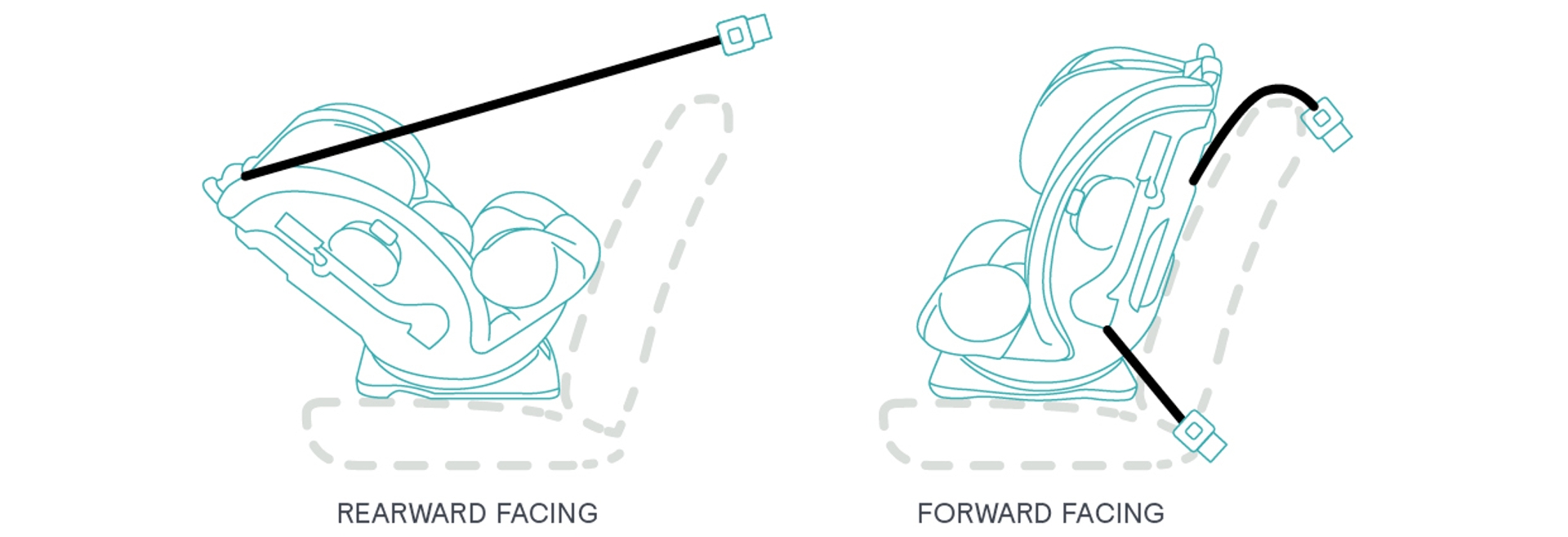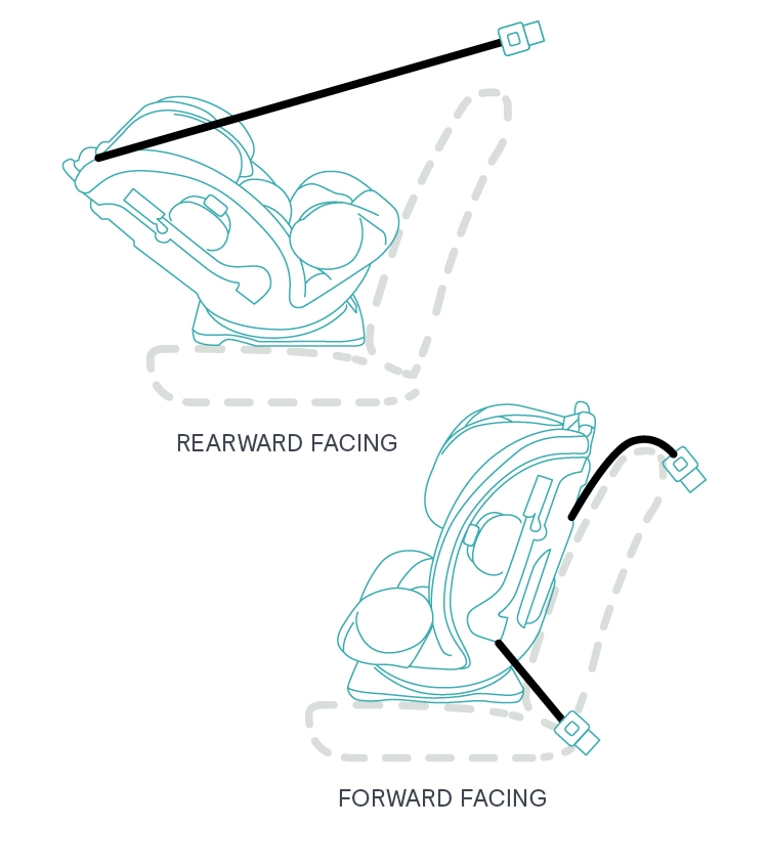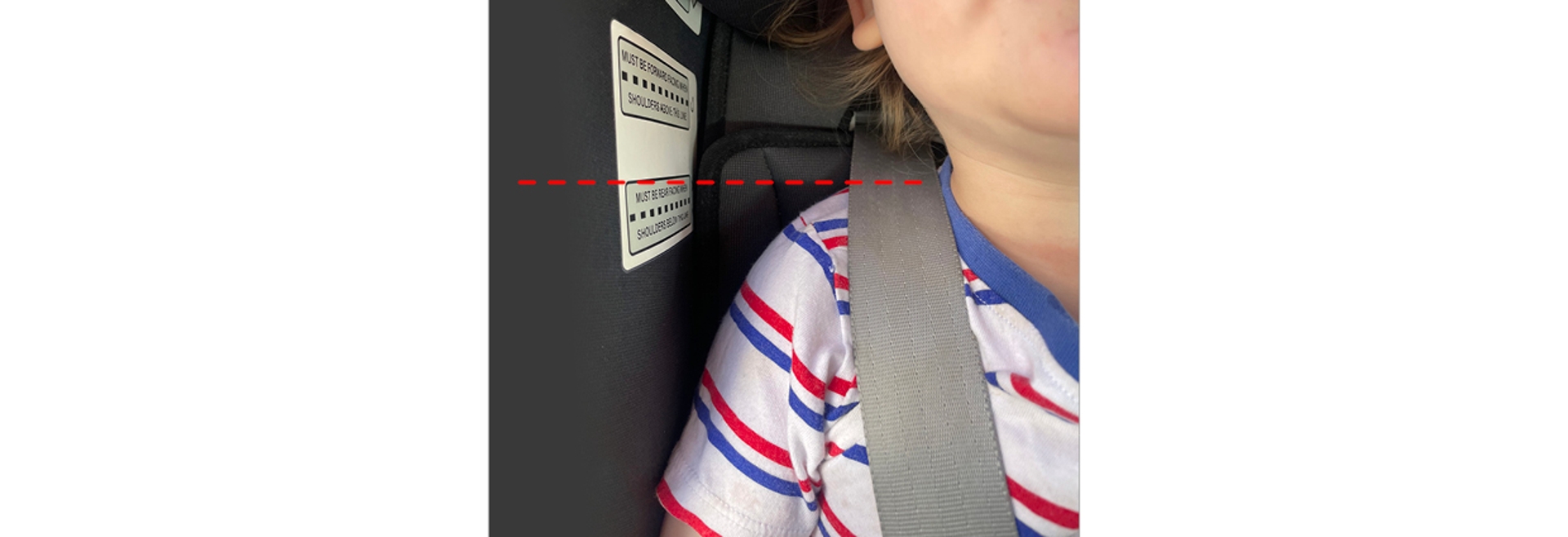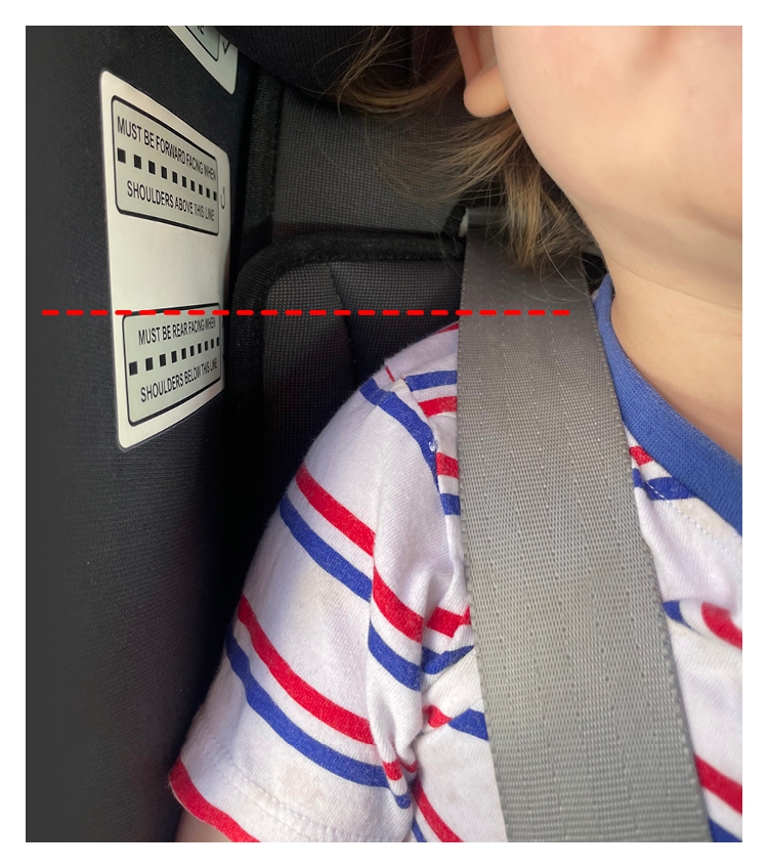Everything you need to know about 0-4 convertible car seats
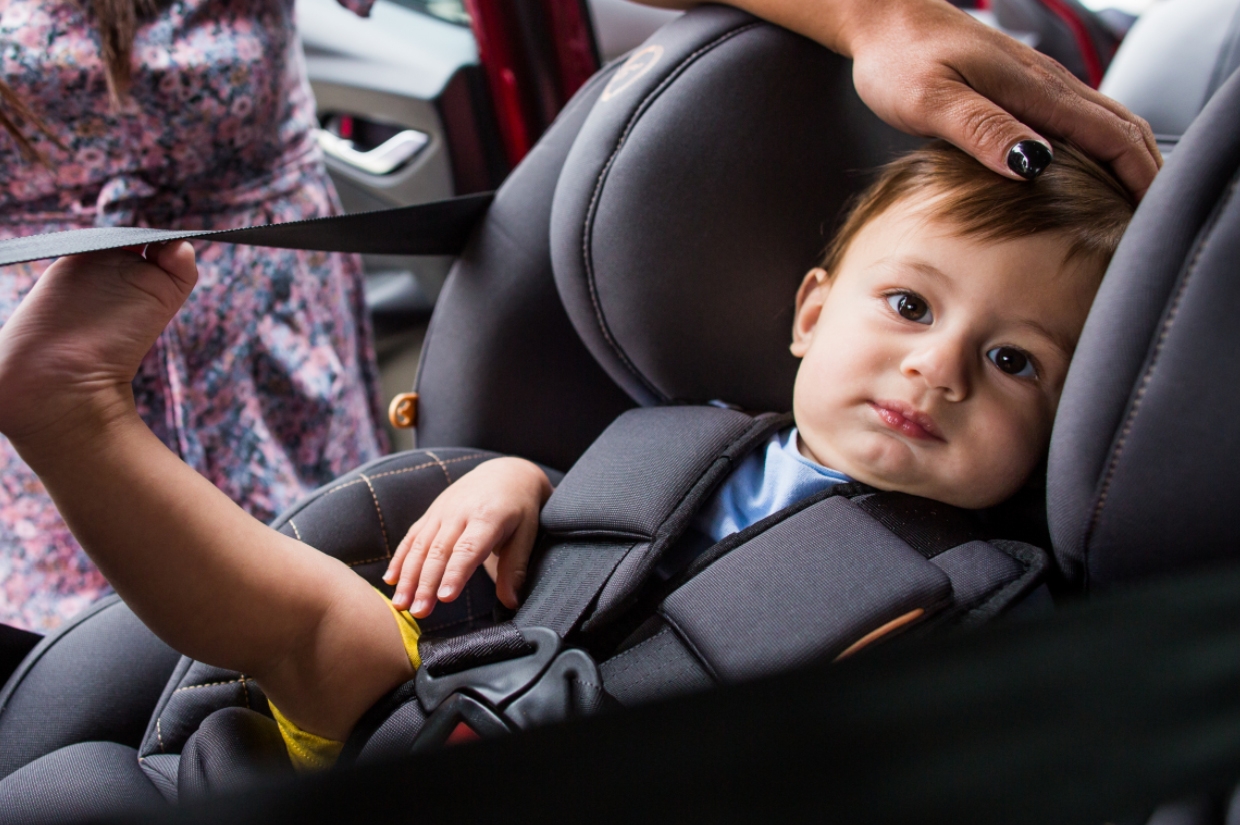
Car seat type: A4 (rear-facing, converts to forward-facing). Age range: 0-4 years*
*This age range is a guide only. Your child may fit a seat for a longer or shorter amount of time depending on their seated height.
What's included in this guide:
- Benefits and drawbacks of purchasing a 0-4 year convertible car seat
- Difference between 0-4 year convertible seat and 0-8 year convertible seat
- How to know when to turn your child from rear-facing to forward-facing
- Features to look for when choosing a seat
- Information on second-hand 0-4 year convertible seats
What is a convertible car seat?
A convertible car seat (sometimes known as a reversible seat) fits children from birth through to approximately 4 years old. Their name comes from the fact that they ‘convert’ from rear-facing to forward-facing, making them a versatile option as your child grows.
Unlike baby capsules, a convertible car seat stays in your vehicle, and you strap your child in and take them out each time you enter and exit the car.
Is it worth buying a convertible car seat?
Like any baby purchase, this decision lies with you and your family! Here are some pros and cons to help you decide.
What are the benefits of using a 0-4 car seat?
There are some benefits that a convertible seat offers:
- Convertible car seats last a number of years, making them a cost-effective option for families who don’t want to purchase a replacement seat in their child’s first few years.
- Extended rear-facing (ERF) convertible car seats allow you to rear-face your child for longer (up to approximately 2.5 years old) if that’s important for your family.
Are there any drawbacks to using a 0-4 seat?
Unlike a baby capsule, these seats stay entirely in your vehicle, meaning you don’t have the convenience of keeping your baby strapped in place as you transition in and out of your vehicle.
What is the difference between 0-4 convertible car seats and 0-8 convertible car seats?
The main differences are size and cost. A 0-8 convertible car seat needs to be much larger to have room for your child through to approximately 8 years old, whereas 0-4 car seats can be more compact. The 0-8 seats will typically cost more initially, though this may be offset when you consider you may not need to purchase another seat for your child as they get older.
How do you know when to turn your baby from rear-facing to forward-facing in a convertible car seat?
As we explored in our car seat information resource, there are two different approaches to turning your baby around in the car. Legally, you can turn them from as young as 6 months old (though you should always ensure they meet the markers on their seat before doing so). Car safety experts recommend leaving your child rear-facing for as long as possible as it’s the safest way for your little one to travel.
Following the markers on your seat is always recommended, as they reflect how your car seat has been safety tested. To measure your baby against the markers, draw a line from where the harness strap crosses their shoulder to the side of the seat where the marker is.
The child in the image below is approximately 2.5 years old and in an extended rear-facing-capable 0-4 convertible car seat. The harness strap is coming from above their shoulder, which is essential when rearward facing in a car restraint. You can see their shoulder is above the first marker, which means that according to the car seat manufacturer they could be turned forward-facing, but they are still under the second marker, meaning they still have significant torso growth before the seat must be turned forwards.
What features to look for when choosing a convertible car seat
When you’re looking to purchase a convertible car seat for your baby or toddler, there are some things to consider as your browse the options.
Safety and installation features
Some baby car seats have extra features for either safety or convenience. Here are some to look out for.
Side impact protection
Many convertible car seats offer side impact protection in case of accidents involving a side impact to your vehicle. Unlike front-on accidents, with a side impactthere is very little between your child and the outside world to absorb the force. By offering extra layers of cushioning to either the head region, the torso region, or both, side impact protection can help protect your child in an accident.
Easy Adjust Harness
As your child grows, the height of the harness needs to change to ensure it will secure your child safely. In the past, to change the harness height, you would need to uninstall your car seat, unthread the straps, rethread them to the new height, put the height of the headrest up separately, and then reinstall your car seat.
While some car seats still use this method, others offer an Easy Adjust harness, where your headrest and harness can be lifted to the next level using a pull-pin or pushing it in a certain way. Because you aren’t uninstalling it every time, and the headrest height is automatically at the right level according to your child’s height, this feature reduces the risk of human error, making it handy for both convenience and safety.
ISOFIX
ISOFIX is a car seat installation system that involves clipping the car seat into anchorage points manufactured into cars. All car seats can be installed using the traditional seat belt to secure it into the vehicle, but some offer ISOFIX as an alternative. The benefit of ISOFIX is it can be a little easier to install correctly, though both installation options are safe when done properly.
Note: if you are using ISOFIX to install the seat into your vehicle, you shouldn’t also use the seat belt. It’s one or the other, never both.
The potential size of your baby
Generally, newborn babies will fit most convertible car seats, but if you’re going to be welcoming a very small bub into your family, then you might want to consider purchasing or hiring a capsule designed for small babies, just until your little one is a little closer to the average size of a newborn.
Depth of the car seat when rear-facing
This will be important if you have a car with less internal space. Some convertible car seats are more compact than others, so if you need a convertible car seat for a small car that will reduce the impact of your baby seat on the front seats of your car, then look for an option which has a rear-facing depth of 55cm or less. We recommend looking at slim and compact seats when you need to fit multiple seats or children in your vehicle.
Should I purchase a second-hand convertible car seat?
While we understand it’s not an option for every family, if it’s possible, we recommend purchasing a new car seat. Second-hand car seats may have faults not visible to the eye due to prior impacts, incorrect maintenance and washing, or poor storage between uses.
If using a second-hand seat is right for your family, it’s worth asking a few key questions before installing and using it for your child:
- Do you know the full history? Has the seat been involved in an accident or stored for a length of time?
- Has the seat been visibly damaged or modified in anyway?
- Is the child restraint in line with current manufacturing standards, or does it conform to previous versions of the standard?
- Is the child car seat complete with all components in place?
If in doubt about any of the above points, it might be time to hunt for an alternative seat.
Would you like more information on choosing the right car seat for your child? Make sure you check out our car seat information page.
Alternatively, you can view our range of convertible baby car seats on our dedicated convertible car seats page.



